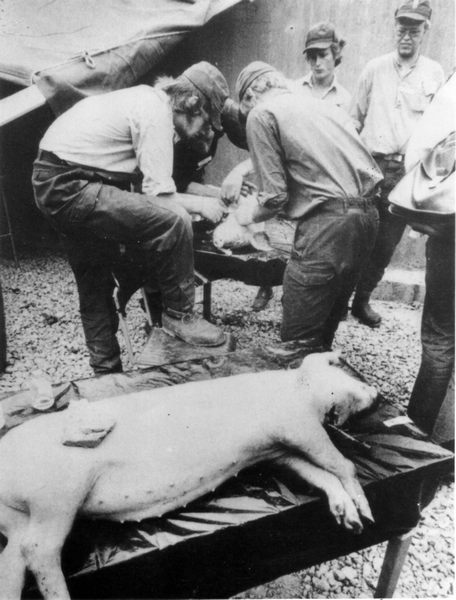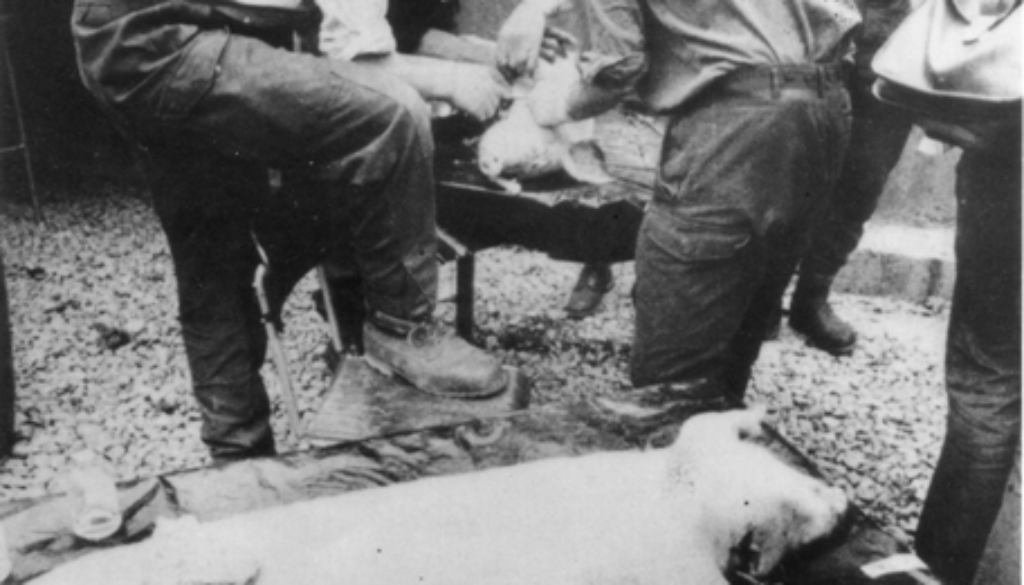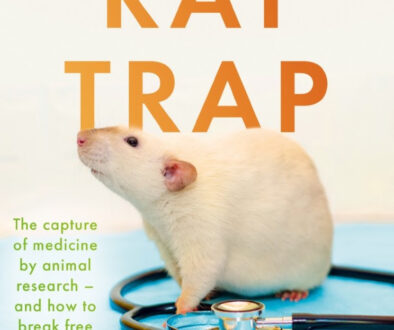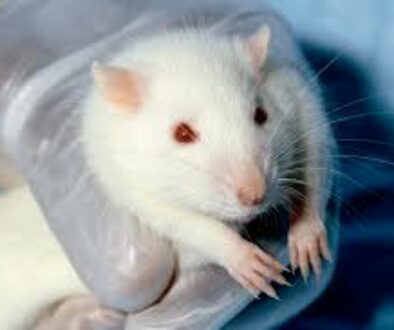Open letter to Rt. Hon Mr Phillip Dunne MP on the use of pigs in military training exercises

We respectfully ask that you take into consideration the weight of the following moral, scientific, pedagogical and legal arguments against continuing this practice.
The moral argument
Civil society is willing to accept some forms of animal suffering, where the “end justifies the means” and on the understanding that the higher the cost to the animal in terms of suffering, the greater the expected benefit to human well being. However, if the public is made aware that viable alternatives exist to the use of live pigs in military training exercises then this practice will no longer be tolerated, as happened in a similar case involving the Ministry of Defence in 2008. After years of conducting experiments on goats to determine the effects of extreme pressure and the “bends” on submarine crews, the MoD bowed to pressure from MPs and animal protection campaigners and announced that these experiments would stop.
The scientific argument
As veterinary surgeons we are acutely aware of the concept of species differences. We would not test a drug for parrots on horses, so where is the logic in training human doctors on pigs? We live in an age of evidence based medicine. The fact that pigs are “similar” to humans, because both are mammals and both bleed when blown up does not make the pig a predictive model of human outcome. Pigs and humans differ in significant ways, for example:
- pigs and humans are separated by 79 – 97 million years of evolution [1, 2]
- in pigs, 70% of the blood volume is at or above the level of the heart. In humans, 70% of the blood volume is below the level of the heart [3]
- blood clotting time differs in pigs and humans [4]
- the pig heart has a more neuromyogenic conduction system than the human [5]
- differences in gene expression between human and pig are responsible for incompatibilities in the blood coagulation systems [6]
The pedagogical argument
The use of live animals to teach and train military as well as civilian surgeons, as illustrated by courses in Advanced Trauma Life Support (ATLS) has long been surpassed by the use of non harmful, alternative techniques.
- 95 percent of U.S. and Canadian facilities that provide ATLS training use lifelike human patient simulators instead of pigs [7]
- the TraumaMan System was evaluated and approved by the American College of Surgeons in 2001 as an alternative to live non-human models or cadavers for ATLS, the leading Trauma Training Course. The system is now used to train over 30,000 medical professionals each year. Since its release, TraumaMan has also become widely used in military courses [8]
- pigs are a poor substitute for real life experience. British civilian and military surgeons have for years gained valuable real life experience by travelling outside the UK and providing medical help where it is most needed, in exchange for their training [9]
The legal argument
Articles 4, 13 and 47 of Directive 2010/63/EC on the protection of animals used for scientific purposes endorse the principle of “Replacement, reduction and refinement”.
Specifically, Article 4 states:
“Member States shall ensure that, wherever possible, a scientifically satisfactory method or testing strategy, not entailing the use of live animals, shall be used instead of a procedure”.
The availability of non harmful alternatives to the use of pigs is now internationally recognised by bodies such as the American College of Surgeons and considered as routine practice in many countries including the US, Canada, as well as the militaries of 23 of the UK’s 27 Nato allies.
The use of live pigs in military training exercises is therefore, in our view, morally wrong, educationally redundant and legally unsound. It is high time the Ministry of Defence ended the practice and instead focused on funding readily available, non-animal alternatives.
Yours sincerely,
Andre Menache BSc (Hons) BVSc MRCVS
Ms Fiona J Dalzell, B.V.Sc., B.A. (Hons) MRCVS
Mark Jones BVSc MSc (Stir) MSc (UL) MRCVS
Iain McGill BSc (Hons), BVetMed, MRCVS
Richard Edwards MSc, MA, VetMB, MRCVS
Peter Southgate BVetMed MSc MRCVS
Jo Lewis BSc BVMS (Hons) MRCVS
Caroline Allen MA VetMB CertSAM MRCVS
Bronwen Eastwood BSc BVetMed CertGP(SAP) MRCVS
Marc Abraham BVM&S MRCVS
Andrew Knight DipECAWBM (AWSEL), PhD, MRCVS, FOCAE
Phill Elliott BVM&S MSc MRCVS
References
1. Kumar S, Hedges SB. A molecular timescale for vertebrate evolution. Nature. 1998;392:917–920.[PubMed]
2. Meredith RW, et al. Impacts of the Cretaceous Terrestrial Revolution and KPg extinction on mammal diversification. Science. 2011;334:521–524. [PubMed]
3. Rowell LB. Cardiovascular adjustments to thermal stress In Handbook of Physiology The Cardiovascular System Peripheral Circulation and Blood Flow Bethesda, MD; Am Physiol Soc, Sect. 2, Vol III, part 2, pp 967-1023
4. Siller-Matula JM, et al. Interspecies differences in coagulation profile. Thromb Haemost. 2008 ; 100(3): 397-404 [Pub Med]
5. Swindle MM, et al. Swine as Models in Biomedical Research and Toxicology Testing. Veterinary Pathology. 2012; 49(2): 344-356
6. Wuensch A, et al. Regulatory sequences of the porcine THBD gene facilitate endothelial-specific expression of bioactive human thrombomodulin in single- and multitransgenic pigs. Transplantation. 2014 ;97(2):138-47 [Pub Med]
7. http://www.pcrm.org/media/online/feb2010/victory-pigs-saved-in-canada
8. http://www.theguardian.com/world/2005/dec/15/southafrica.military



